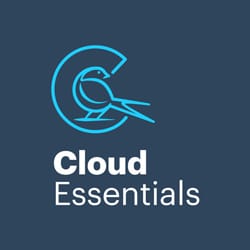Microsoft has announced that all support for SharePoint Server 2019 will end in July 2026. That leaves just over two years for organisations still reliant on on-premises SharePoint installations to plan and action a cloud migration strategy.
Those who miss the deadline will be left on an increasingly shaky security and reliability footing as all security updates, patch releases, and technical support come to an end.
So, what should you be doing if your organisation is still using SharePoint Server 2019? The first and most obvious thing is: don’t panic. There is still time to roadmap a strategically sound migration that supports your organisation’s goals and growth trajectory.
Here’s what you’ll need to think about to get that process underway:
Things to consider when migration from SharePoint 2019 to SharePoint online
Security
With SharePoint Server, you were responsible for all aspects of your locally-hosted platform, from server architecture to active directory to file storage and more. In SharePoint Online, the cloud-based service is provided directly by Microsoft, and has a number of security features already built in.
These native features safeguard against unauthorised access, data breaches and other cyber risks. They do not, however, cover the full spectrum of security needs. Microsoft Defender will still be an essential component of your security arsenal, and will need to be configured to meet your organisation’s specific security requirements.
This is a good time to look at how cloud-native tools differ from their on-premises counterparts in order to identify any new and improved features that could benefit your deployment. Activities to consider include:
- Data discovery for sensitive data
- Defining a data classification taxonomy for your business
- Assigning sensitivity labels
- Defining encryption requirements
- Defining access controls
Remember: there is always a balance to be struck between security and productivity. Every organisation’s configuration will be different. If you need help pinpointing your sweet spot, we highly recommend making use of our Cloud Essentials migration experts. Our extensive background in migrations for highly regulated (and highly competitive) organisations means we know every trick in the book to maximise security and compliance, minimise user disruption, and enhance productivity moving forward.
Compliance
Compliance also needs careful consideration before (and during and after) a migration. In SharePoint Online, you’ll be using Microsoft Purview – Microsoft’s feature-rich compliance tool – to meet your compliance requirements. (Purview has compliance capabilities accessible on all licence levels.)
Purview can be configured to meet everything from data privacy and data protection requirements to regulatory requirements around retention and disposition. It can also be used for reporting, with assessments and dashboards that provide valuable insights into compliance gaps and the actions that need to be taken in order to solve them.
Be warned: deploying and configuring Microsoft Purview isn’t a quick “one and done” project. It’s more of an ongoing programme of works requiring long-term engagement from stakeholders across the business (including IT, governance, compliance, risk, HR and legal).
Managed correctly, this drives progress along a compliance maturity pathway that adapts as business and regulatory needs change. But it’s not an easy feat to get everyone on board and talking the same language.
Having an experienced and objective partner like Cloud Essentials on board can be a gamechanger in terms of facilitating effective discussions, achieving timely decisions, and formulating effective compliance policies that leverage the available technology to its fullest.
Backup and Recovery
While Microsoft is responsible for your SharePoint Online infrastructure, you are responsible for backup and recovery of your data and settings. Pre-migration is a great time to review your backup requirements and analyse the latest cloud backup solutions.
Things to consider when selecting a backup and recovery solution include:
- Cost – Cloud backup solutions often offer significant savings over legacy on-premises backup solutions.
- Recovery goals – How recent do your backups need to be, what level of granularity do you need for restores, and how quickly do you need to be able to recover from an incident? Remember, different users/departments/content types may have different recovery requirements.
- Content fidelity – Are you able to restore content to its original location, complete with its version history and metadata to preserve your data classification system?
- Ease of use – The easier the better. Support for user-initiated self-restores is a big bonus.
- Credibility – Look for a vendor with a reputation for excellent support services across all product tiers, and good reviews by respected industry researchers like Gartner and Forrester.
- Future-proofing – Has the solution demonstrated an ability to adapt to market demands and accommodate shifts in anything from storage requirements to new workloads across a multi-cloud presence?
- Security – Check the vendor’s security certifications and standards (e.g. ISO 27001) to confirm their commitment to the security of their solutions.
- Compliance – Don’t take compliance claims at face value. Make sure you know exactly how requests like “right to be forgotten” are handled by a solution, and confirm alignment with your specific compliance requirements and policies before making any commitments.
- eDiscovery – Backup solutions with good performance and powerful search capabilities can be invaluable assets for eDiscovery.
Archiving and ROT-removal
Storage in SharePoint Online can get expensive. The more “fat” you can trim off your SharePoint Server before your migration, the better.
We always recommend performing a pre-migration ROT analysis to remove unnecessary “clutter” (and reduce unnecessary risk). It’s also a good time to consider archive options for low-touch data that could be more cost-effectively stored outside of your active environment.
However, determining which content is no longer relevant can be challenging. To address this, we offer post-migration content analysis, leveraging advanced AI capabilities to identify content that can be securely archived or defensibly deleted. Additionally, policies can be established to continuously monitor your environment, ensuring ongoing storage optimization and cleanup as needed.
Data from other sources
If you’re doing the work to migrate your SharePoint Server to SharePoint Online, it makes sense to go the whole hog and consolidate as much as possible in your Microsoft Cloud. (Unless, of course, you enjoy paying for third-party applications and on-premises hardware that duplicate functionality you already have as part of your Microsoft subscription.)
As with all migrations, there are some risks to be aware of – particularly if you’re not intimately familiar with your source, your target, or your potential migration tools. With the right knowledge and preparation, however, these risks can be avoided, unlocking huge benefits that include better value for money, greater functionality, and a smoother Microsoft adoption journey.
As migration experts, there are very few migration pathways we haven’t handled.
Our most common sources include:
- Collaborative solutions (e.g. legacy SharePoint versions, Box, SourceOne, Dropbox, Google, file systems and network shares)
- Document management systems (e.g. iManage, OpenText, Documentum, eDocs and FileNet)
- Messaging solutions (e.g. Exchange, journals, public folders, Notes/Domino and Google Workspace)
- Legacy email solutions (e.g. Enterprise Vault, EAS/Autonomy, EMC EmailXtender, SourceOne, Metalogic Archive Manager, Barracuda, Mimecast, Proofpoint, .pst/.eml formats and journals)
Our most common targets include:
- Exchange Online
- SharePoint Online
- Microsoft Teams
- OneDrive for Business
- Modern Public Folders
- Planner
- Microsoft 365 Groups
- Intapp OnePlace Collaboration & Content
- Azure Preserve
- Cloud Backup
To put it simply: You name it; we migrate it.
Get in touch to find out more.





